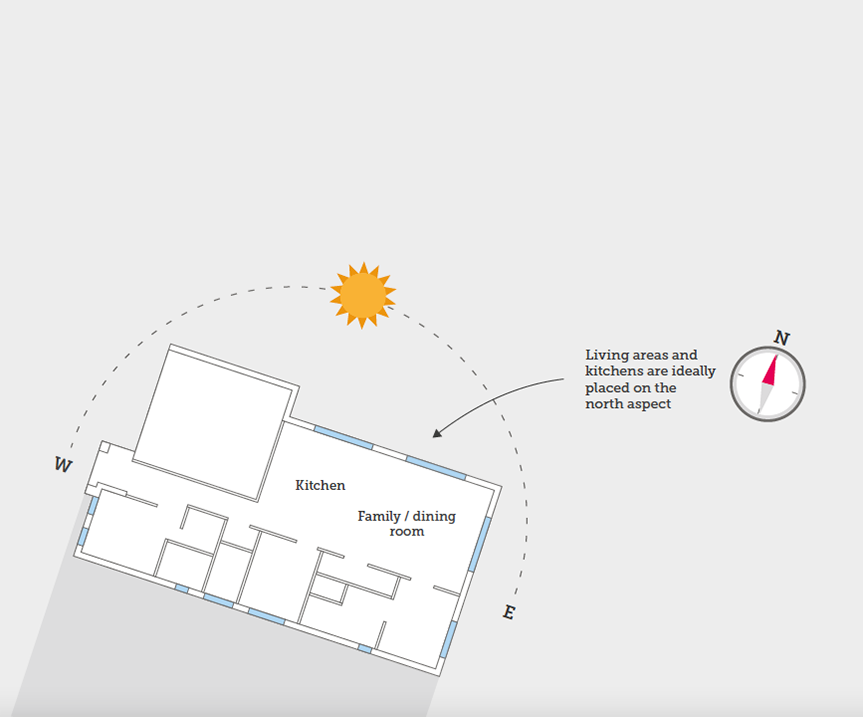April 21, 2022
The Climate Council’s new report Tents to Castles: Building energy efficient, cost saving Aussie homes has found living in a 7-Star, all-electric house in any capital city in Australia would save occupants on average $450 per year on heating and cooling costs compared to the current building standard of 6-Stars.
Low energy efficiency standards have left too many Australians living in poorly-made homes equated to “glorified tents”, which are stifling during summer and freezing in winter. In fact, houses that are too cold contribute to 6% of deaths in Australia – double the rate in Sweden, where winter temperatures reach minus 30℃.
Making new Australian buildings more energy efficient will not only directly save homeowners hundreds of dollars every year in energy bills but would help our country cut emissions and address climate change. Climate Council modelling shows a 7-Star all-electric home achieves a 25% reduction in emissions compared to the current minimum standard of a 6-Star all-electric home.
The report is released as State and Territory Ministers prepare to meet in July to review 11-year old regulations that govern minimum energy efficiency standards in new home builds.


Key Findings
- Low energy efficiency standards have left too many Australians living in poorly-made homes equated to “glorified tents”, which are stifling during summer and freezing in winter.
Australian homeowners face some of the most expensive energy bills in the world with as many as 85 per cent of Australians experiencing “bill shock” during 2020.
Australia introduced home energy efficiency standards a generation later than our international peers – and at a lower standard – lumping people with homes that are uncomfortable and more expensive to run.
Six per cent of deaths in Australia are contributed to by people living in households that are too cold – double the rate in Sweden, where winter temperatures reach minus 30°C.
Australian homes are energy guzzlers compared to those built to higher minimum standards overseas, with a Tasmanian home built today using more than double the energy of a similar house built in Ireland. - Making new Australian buildings, including homes, more energy efficient will directly save homeowners hundreds of dollars every year in energy bills, and also cut network costs for all energy users.
Climate Council analysis shows someone building a 7-Star, all-electric house in any capital city in Australia will save on average $450 per year on heating and cooling costs compared to a 6-Star home; with those in Adelaide, Canberra, Darwin and Hobart saving more.
Improving energy efficiency in new homes means reduced demand for energy from networks (even when solar is excluded). Considering 1.1 million homes are expected to be built in Australia over the next five years, higher standards could result in reduced need for network expansion and lower capital costs.
Building a 7-Star home over a standard 6-Star home can be marginally more expensive, but costs substantially less to run every year, from then on. - Making new Australian homes more energy efficient will help our country cut emissions and address climate change.
Climate Council modelling shows a 7-Star all-electric home achieves a 25 per cent reduction in emissions compared to the current minimum standard of a 6-Star all-electric home.
For every new home built to 7-Stars, the emissions saved each year are equivalent to taking a car off the road for an entire year.
If we counted all the heating and cooling emissions saved from building 7-Star homes out to 2030 it would add up to total savings of 7.7 million tonnes; equivalent to a 12 per cent reduction on our 2019 national residential emissions.
Economists calculate the economic benefits of avoiding these emissions over a ten-year period as being at least $90 million and up to $3.5 billion, depending on the cost of carbon factored in.
Every new 7-Star home that is built in Australia uses a third of the energy needed to heat and cool a 1.5-Star home. These savings are significant given 80 per cent of Australian housing stock was built before the 6-Star standard came into effect. - Updating the National Construction Code so that 7-Star homes are the minimum standard is a huge opportunity to improve the quality, comfort and running cost of Australian homes. Any delay in doing so will lock in higher bills and emissions for many years.
For the first time in 11 years, the laws that mandate minimum energy efficiency standards are being reviewed, with a proposed increase from 6-Star standard homes to 7-Stars under the National Construction Code (NCC). Such an update is long overdue.
Developers are already building 7-Star homes, including some of the country’s largest home builders, and standards at this level have been discussed since the NCC was first introduced in 2003.
Any delay in introducing new standards will lock in higher bills and emissions. An independent analysis from Australian Sustainable Built Environment Council and ClimateWorks (2018) found that a delay in implementing new standards could mean 1.1 million homes (including townhouses and apartments) will be built to a poorer standard; adding $2 billion to residential energy bills and $720 million in additional network costs.
The same analysis found a delay would also add 9 million tonnes of emissions this decade making it more difficult for states and territories to reach their climate targets. This would be the equivalent of forcing one of Australia’s larger coal power stations to operate for an extra, unnecessary year.

